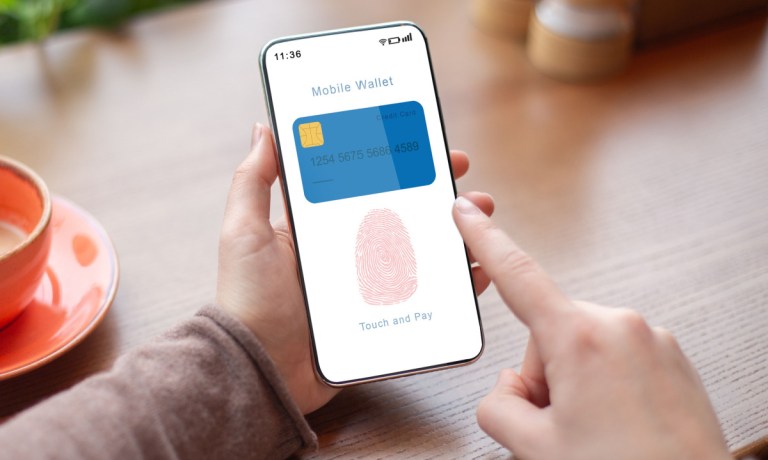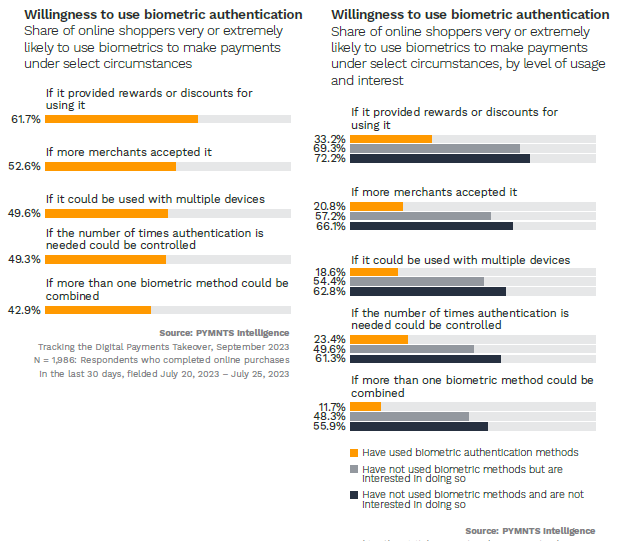Some Consumers Might Need Rewards and Discounts to Try Biometric Logins

Biometric authentication, a technology that uses unique physical or behavioral traits for identity verification, has gained popularity in recent years.
In fact, according to joint PYMNTS Intelligence-AWS study “Tracking the Digital Payments Takeover: Biometric Authentication in the Age of Mobile,” of the nearly 60% of consumers completed online purchases in the last 30 days, 51% used biometric authentication to validate their transactions, eliminating the need to remember passwords or enter credit card information.
However, not all consumers have embraced biometrics’ potential, and convincing those who are not interested in adopting the technology can be a challenging task.
According to the PYMNTS Intelligence study, baby boomers and seniors are the generation most likely to resist using biometrics. This resistance may stem from a lack of knowledge on how to use the technology or a preference for manually entering information. Additionally, a significant portion of Generation Z consumers who do not use biometrics express concerns about identity theft, indicating that security is a primary worry for this age group.
One effective approach to persuade uninterested consumers to use biometrics is by offering rewards or discounts. The study found that 72% of uninterested consumers would be willing to use biometric methods if merchants provided such incentives. Additionally, one-third of consumers who have used biometric authentication methods also expressed their willingness to use it if rewards or discounts were offered.

While offering incentives can be effective, it is important to consider the associated costs. Therefore, alternative strategies should also be explored. One such strategy is to increase the acceptance of biometric authentication among merchants. Two-thirds of consumers who already use biometrics for online shopping stated that they would use it more often if more merchants accepted this form of authentication, highlighting the importance of expanding the availability of biometric authentication across various platforms.
Another aspect that can drive greater adoption is the ability to use biometric authentication on multiple devices. Over half of nonusers interested in using biometric authentication methods expressed openness to trying it if it could be used on multiple devices. This indicates the need for seamless integration across different devices to enhance user convenience and encourage adoption.
Additionally, consumers value having control over the authentication process. A significant percentage of biometric users emphasized the importance of having more control over how often authentication is required. This suggests that allowing users to customize the frequency of authentication can contribute to a more positive user experience and potentially increase adoption rates.
In conclusion, convincing consumers who are not initially interested in using biometrics to adopt this technology may be challenging, but various strategies can be employed to overcome these obstacles. Offering rewards and discounts, expanding merchant acceptance, enabling multi-device usage, and providing users with more control over the authentication process are all promising approaches. By implementing these strategies, merchants can encourage wider adoption of biometric authentication, enhancing security and convenience for consumers in the digital age.